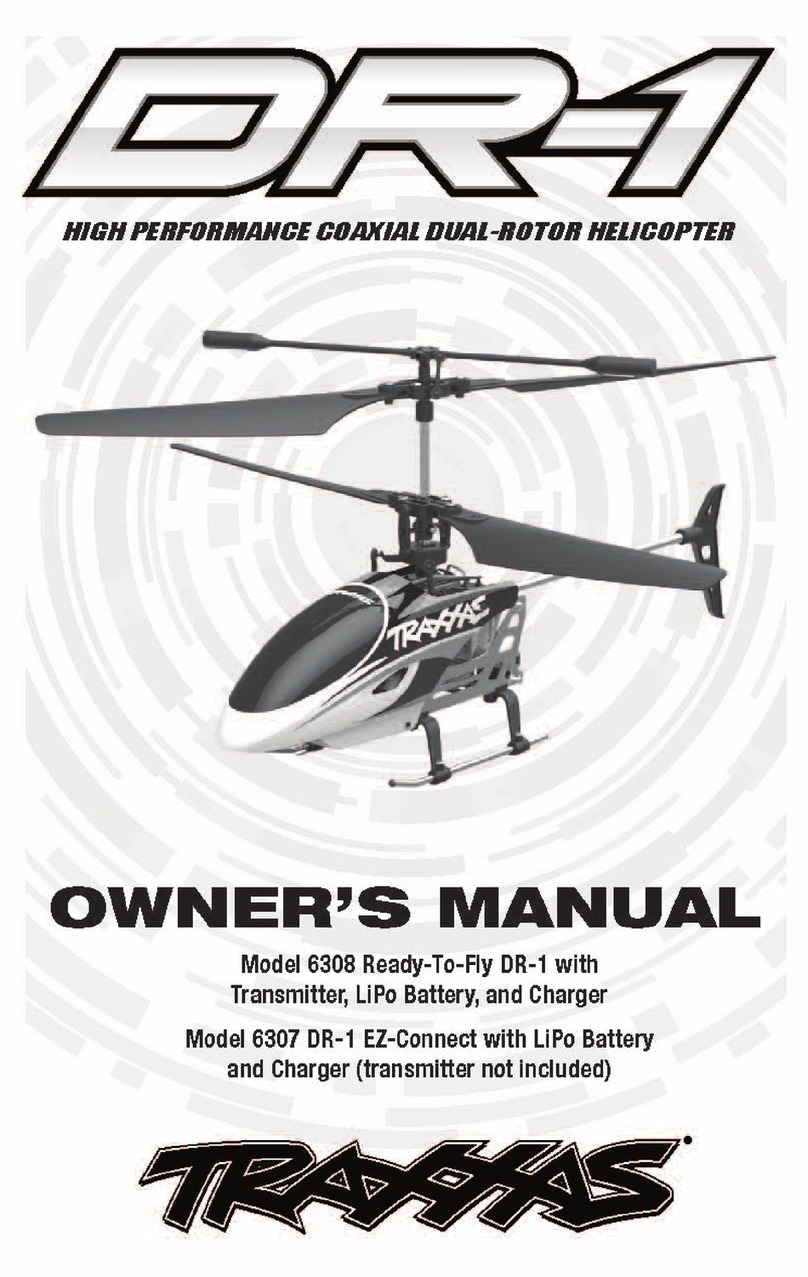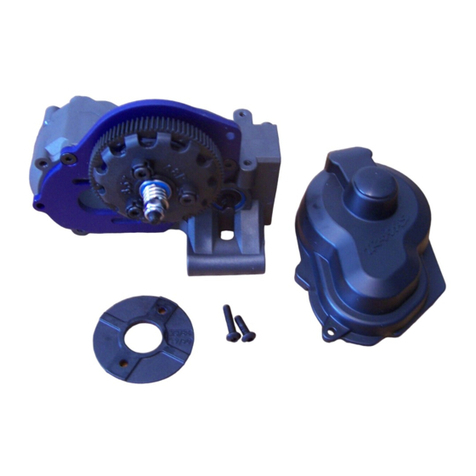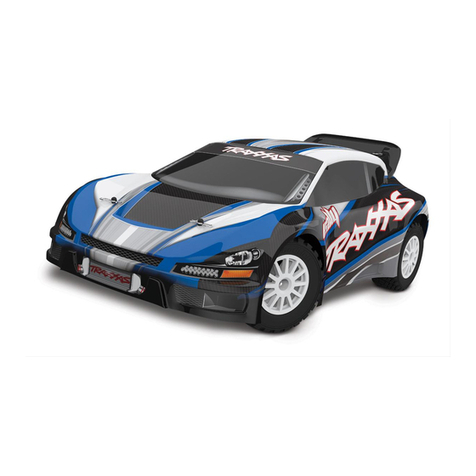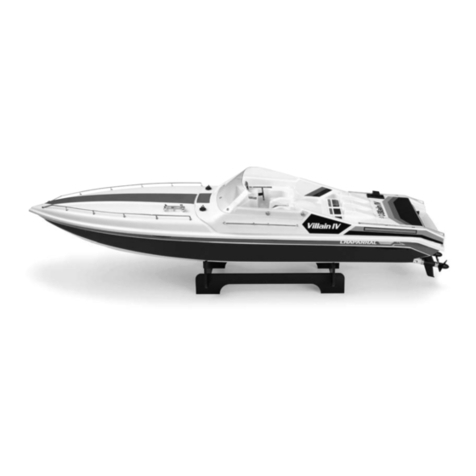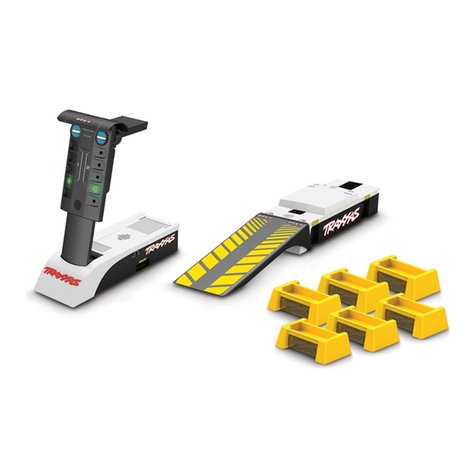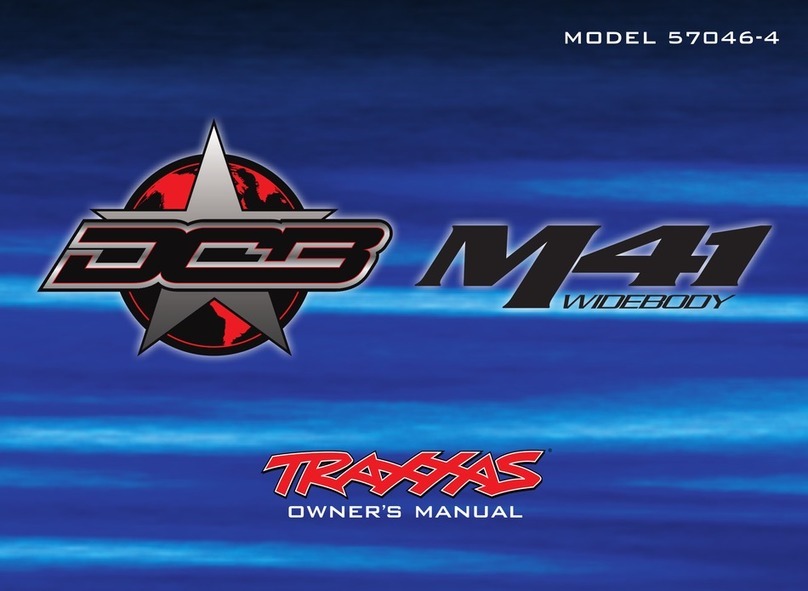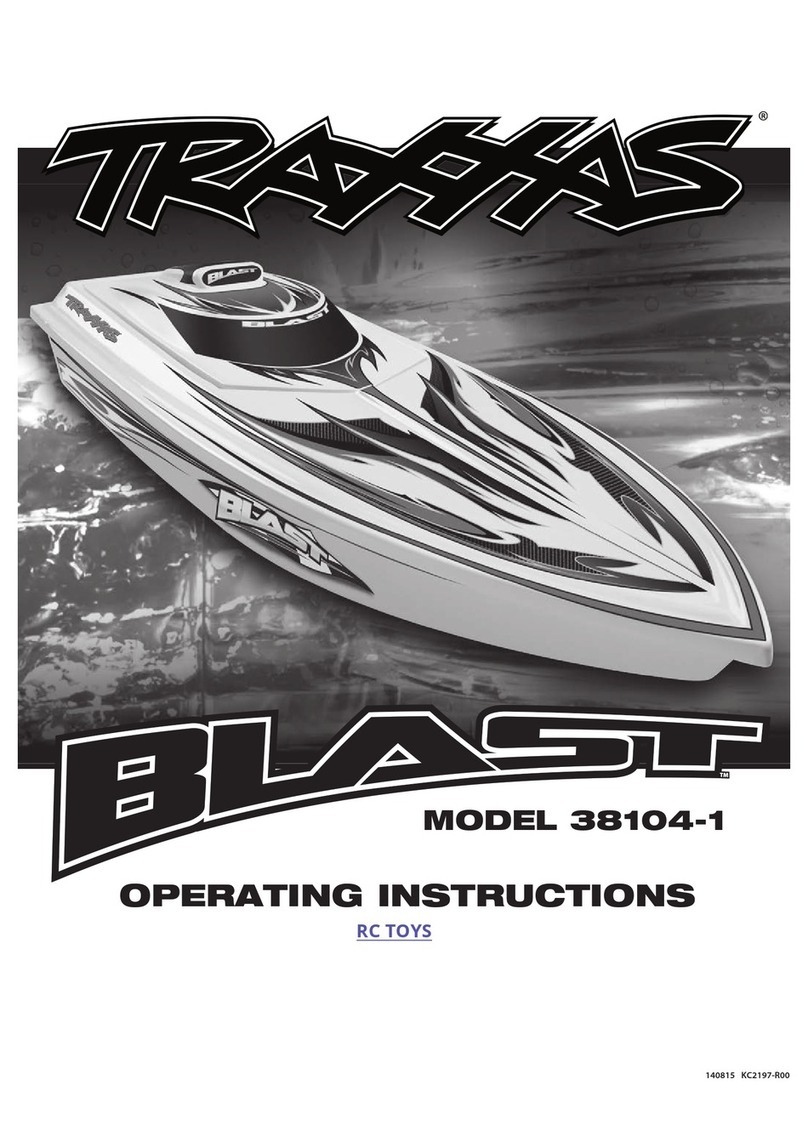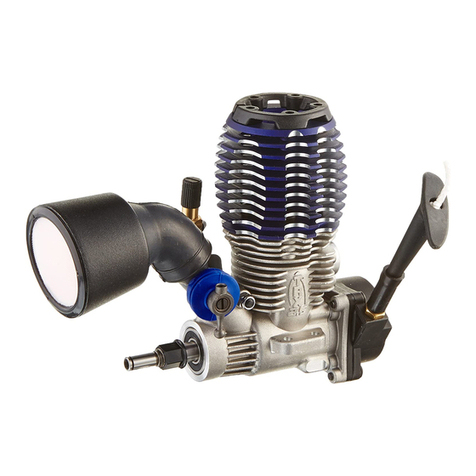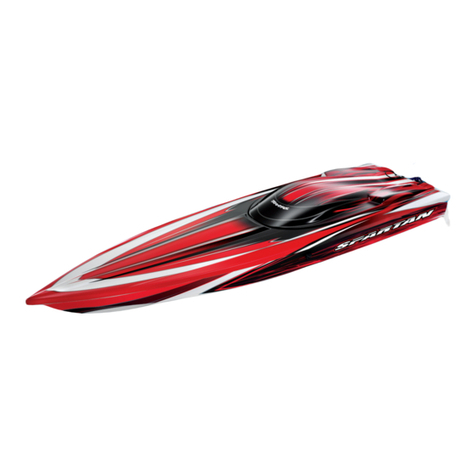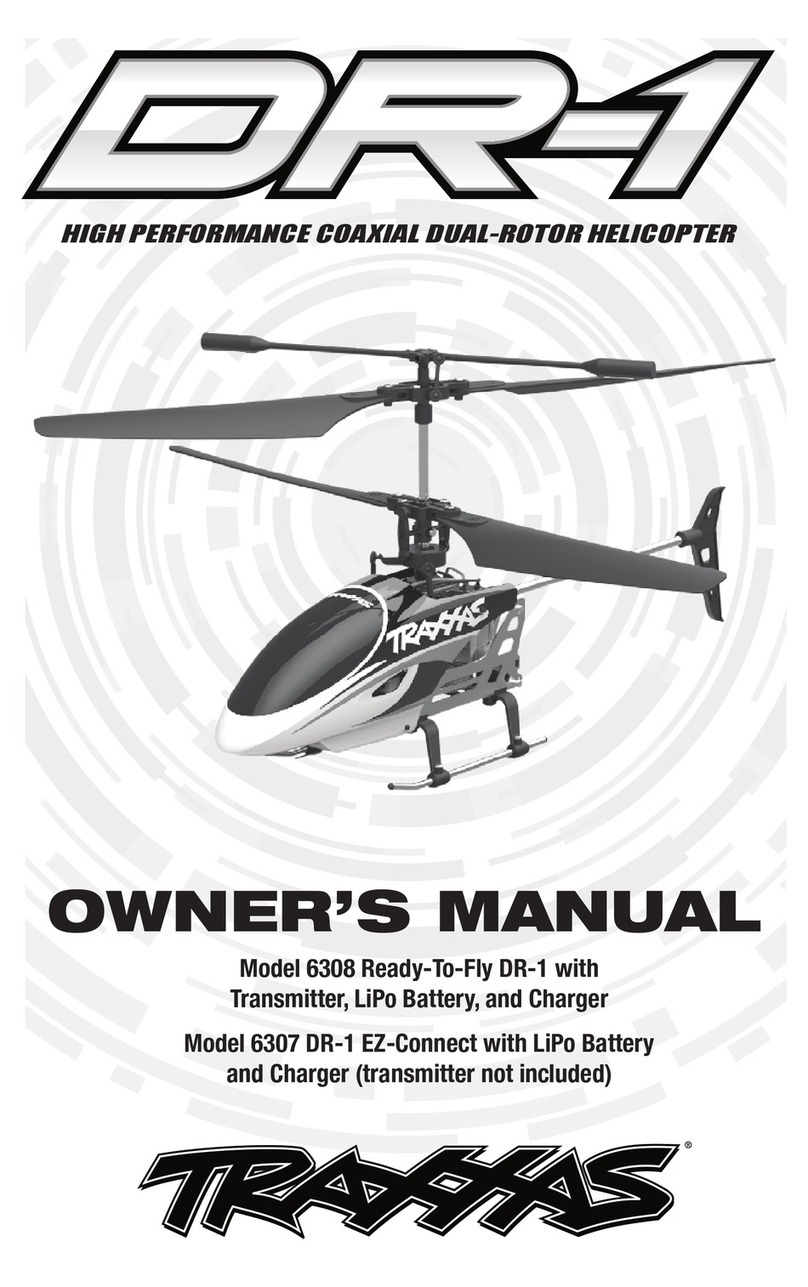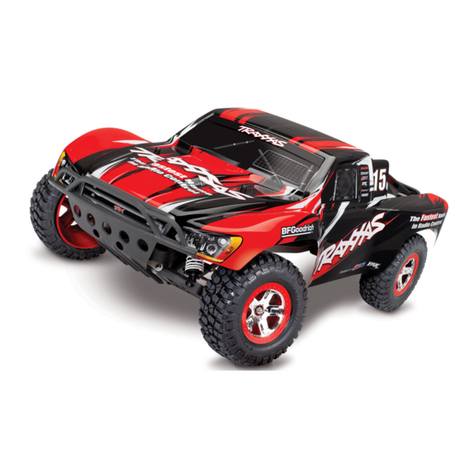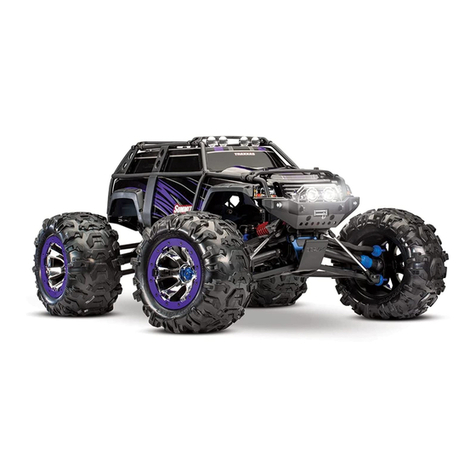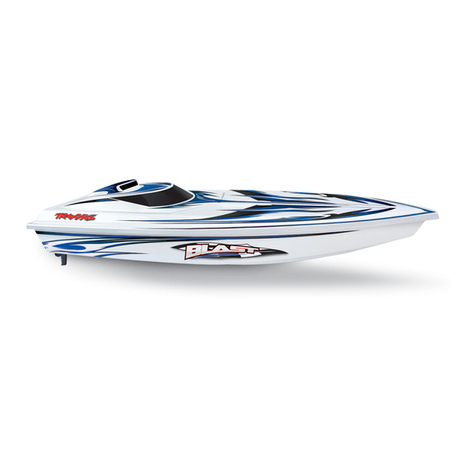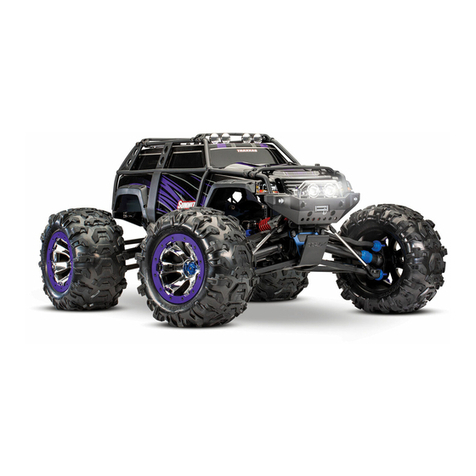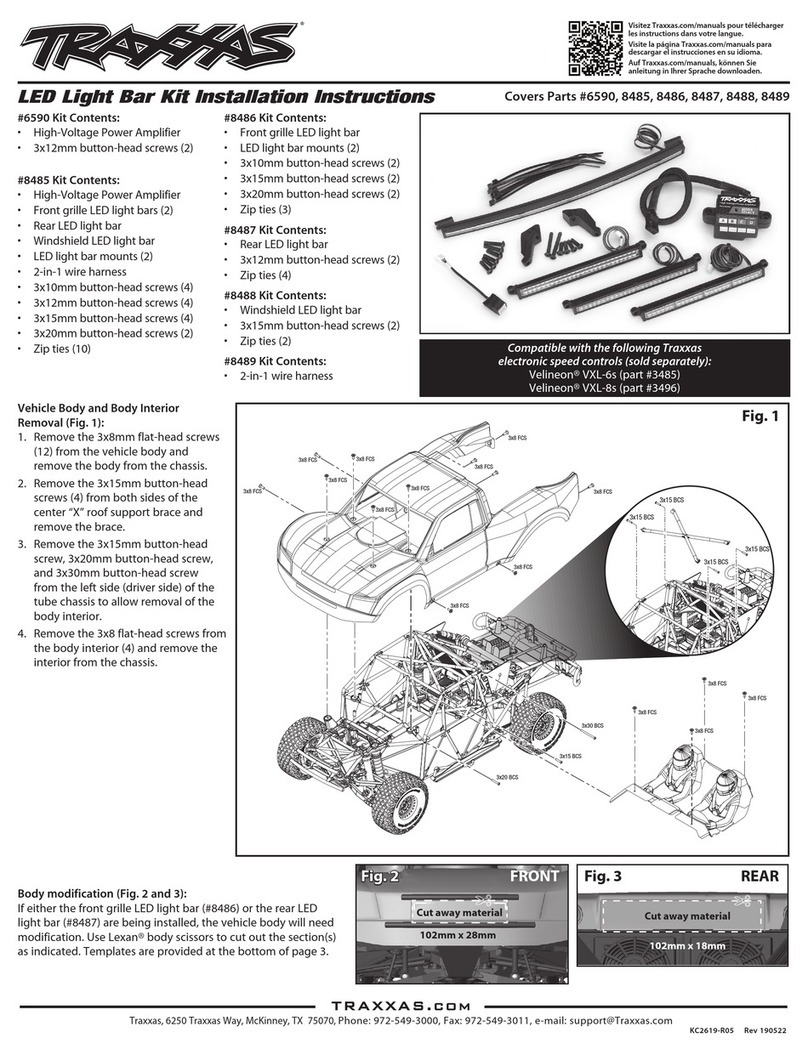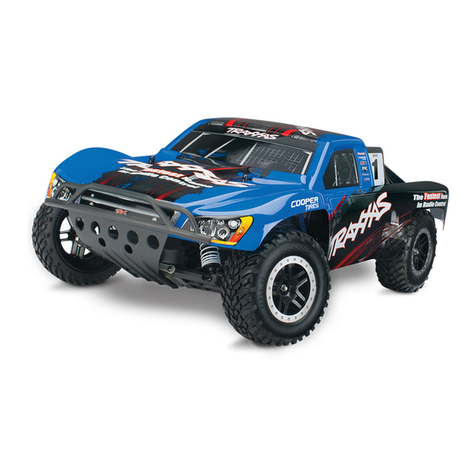6
STEP 7: START THE ENGINE
Before starting your engine, read the safety and mechani-
cal engine precautions on pages 2 and 8.
1) Tu rn the radio system on (transmitter and receiver). Set the boat
securely in its stand.
2) With one hand, hold the throttle about half way open using the
throttle stick on the transmitter. With the other hand, press the start
button on the EZ-Start and hold for no more than 5-seconds.
Once the engine is running, hold the engine at a medium speed for
10-15 seconds.
Note: The red LED on the EZ-Start will light when the start button
is pressed. This indicates that the glow plug is hot (ignited). If the
LED does not light, make sure that the glow plug connector (blue
wire) is firmly attached to the center post of the glow plug. If the
connection is secure, and the LED still does not light, replace the
glow plug.
3) If the engine did not start in step 3, wait 20-seconds and restart.
Continue this sequence until the engine starts.
4) If, after many tries, the engine still will not start, there could be a
problem with the glow plug, the fuel, or the engine could be flooded.
Refer to the troubleshooting section for more information. Keep in
mind that the engine was run at the factory prior to being shipped,
so any starting problems are most likely fuel or glow starter related.
STEP 8: DETERMINING THE FUEL MIXTURE
Allow the engine to warm up for approximately 15-30 seconds.
If the engine will not idle, then re-adjust the idle speed.Turn the idle
screw clockwise to increase the idle speed.
Slowly advance the engine to full throttle, allow the engine to
“clean out” the excess fuel, and then return to idle. If full throttle is
applied rapidly to a cold engine, it will stall. If a cold engine stalls,
repeat the priming and starting procedure again. Do not operate
the engine at high RPMs for extended lengths of time while
the boat is out of the water (no load on the propeller). This could
damage your engine and drive system bushings. Avoid running the
engine for more that a minute out of the water or it could overheat.
If the engine will not accelerate without dying, then either the
high-speed fuel mixture is too rich, the engine is still cold, the throt-
tle was advanced too quickly, or the low-speed mixture is too lean.
Lean the fuel mixture by slightly turning the high-speed mixture
screw clockwise. Repeat the acceleration test.
Once the engine will accelerate without dying (slight hesitation
is okay), then the Nitro Vee is ready to put in the water. Install the
top cover before driving. (Note: Do not run the Nitro Vee without
the top cover securely in place.)
STEP 10: IN THE WATER
Once again, check for proper radio system operation. Place the
boat in at least 10 inches of water (clear of weeds, sticks, trash,
etc.). Accelerate slowly to full throttle. The Nitro Vee should come
up on plane and begin to accelerate strongly after about 25 feet or
less. The steering will be unresponsive until the boat is up on plane.
Once on plane, a large amount of steering input is required to force
the Nitro Vee off the “bubble” of planing. After making the first turn,
the steering response will greatly improve.
Once on plane, drive the boat past you so that you can visually
check for cooling water exiting the outlet at the rear of the boat. If
you cannot see the small stream of water, retrieve the boat imme-
diately to find the problem. The water-cooling system only func-
tions when the boat is at speed, on plane. For this reason, do not
allow the boat to cavitate or idle for more than a minute, or the
engine could overheat.
DRIVING THE NITRO VEE
• The Nitro Vee is lighter and more agile than a comparably-sized
electric boat. Because of its lighter weight, it rides higher out of
the water. Care should be taken to operate the controls smooth-
ly to avoid spin-outs as you turn. Drive cautiously in rough, chop-
py water, and in high winds. The “deep V” hull offers much more
stability than other designs however, the Nitro Vee can still flip if
it hits a wave at an unusual angle or if a gust of strong wind
catches it too high out of the water. It is best to drive your Nitro
Vee on calm days (winds less than 15mph).
• The Nitro Vee’s steering is very responsive. When the Nitro Vee
is in open water, adjust the steering trim on the transmitter until
the boat travels in a straight line on its own. (Note: The Nitro Vee
will only travel in a straight line on its own when it is headed
straight into or away from the wind. Crosswinds will require con-
stant steering input to maintain a straight course.) A slight input
on the steering control will have a large effect on the boat. Do not
let the Nitro Vee “spin out,” or it could flip over.
• Always be ready to reduce the throttle if the Nitro Vee appears to
be unstable or “chine walking” (rocking violently from side to
side). Always reduce the throttle when turning, especially in
rough water. Jumping the Nitro Vee or towing anything with it
should not be attempted.
•Return the Nitro Vee to shore at the first sign of weak bat-
teries. The Nitro Vee will begin to slow and the controls will
become sluggish.
•CAVITATION: If the Nitro Vee is running at full throttle, but is
only barely moving forward then the propeller is cavitating. Try
advancing the throttle slowly to get the Nitro Vee on plane.
If
you are having trouble with cavitation, check the propellers for
nicks or tangled debris. The Nitro Vee’s propeller is specially
designed for its application and is very sensitive to any changes
or modifications. Even the slightest nick can prevent your boat
from planing. If a prop is damaged it should be replaced.
BREAKING-IN THE ENGINE
Once your engine is running, it must be broken-in. The key to
breaking in your engine is patience. During the break-in period,
your engine may appear to malfunction with symptoms such as
stalling, inconsistent performance, and fouled glow plugs. Don’t
give up on it! These are just “break-in pains” that every new engine
has to go through, and which will disappear once you get through
the break in period. Just keep it running, and throttle on and off
as smoothly as you can. Sudden bursts or releases of the
throttle can stall your engine. Soon, after about the second tank
of fuel, your patience will pay off with solid, consistent, performance.
The break in time will take about 1 to 11/2 hours. During this
time, you should resist the temptation to tune the engine for per-
formance and/or run for extended times at wide open throttle.
Completing the break in process as instructed will result in the
fastest, best-performing engine.
PLEASE READ THESE IMPORTANT NOTES BEFOREYOU BEGIN:
•Use fuel with the same percentage of nitro which you plan to
run every day. Special break-in fuels are not required.
•Do not allow the fuel tank to run completely empty. An
extremely low fuel level causes the fuel mixture to be too lean.
•Keep extra glow plugs handy. The break-in process can cause
deposits to form on the glow plug, leading to failure.
•Turn the mixture screw (needle) clockwise (in) to lean the
mixture and counter-clockwise (out) to richen the mixture.
CAUTION:
TRX ENGINES MUST BE BROKEN-IN FOR MAXIMUM LIFE
AND HIGHEST LEVEL OF PERFORMANCE. THIS PROCESS
MUST NOT BE SKIPPED. A SHORTCUT HERE COULD
SHORTEN THE ENGINE LIFE

